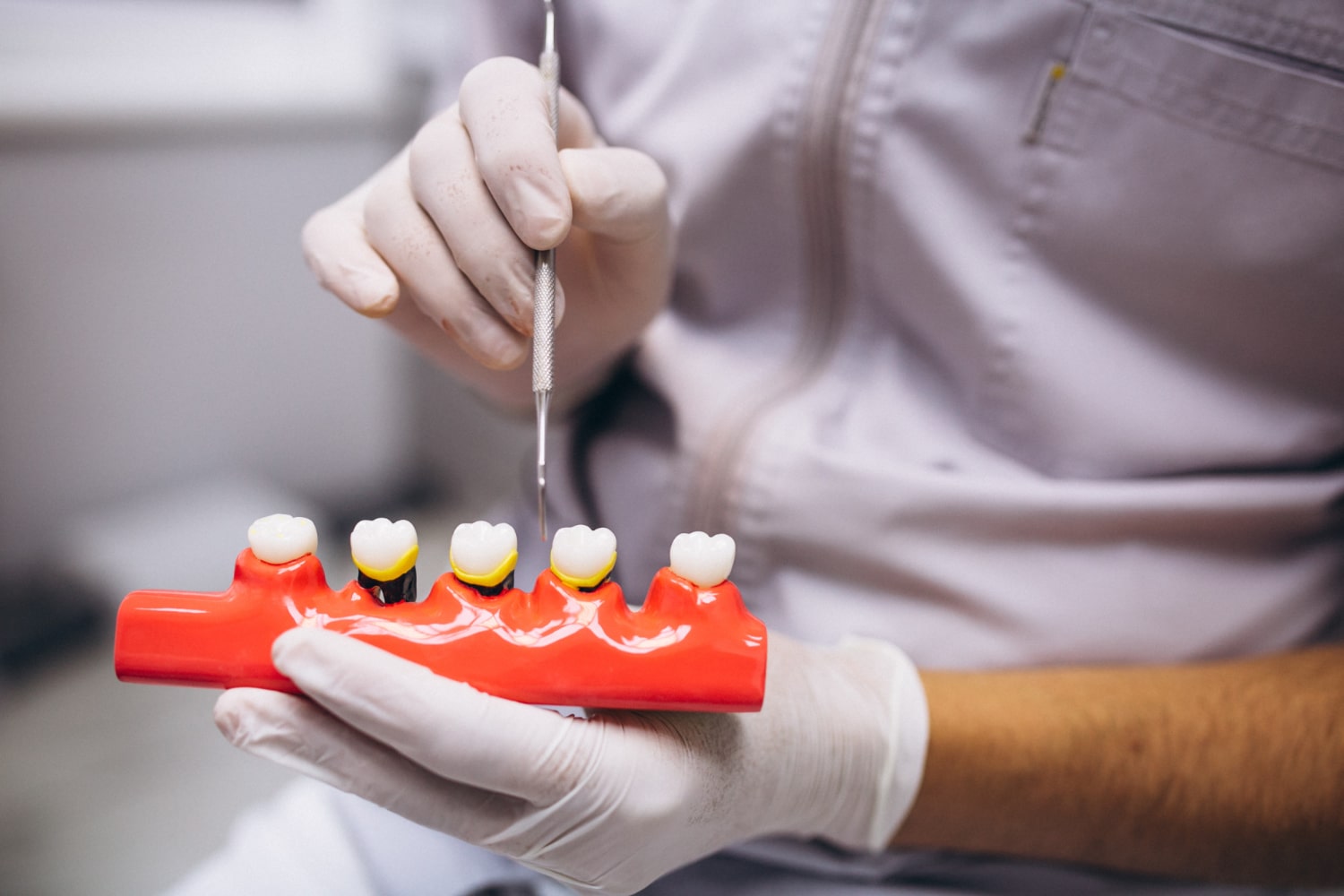Thinking of implants but your dentist has told you that you don’t have enough bone for implants? Don’t Worry! Bone grafting implants are a treatment for patients with jawbone loss who can qualify for dental implants and achieve a healthy and natural-looking smile again.
In this blog, we learn what bone grafting means, how it’s done, what recovery is like, and how to get started with treatment.
Understanding Bone Grafting and Why it’s Done
Bone grafting is a surgical procedure that repairs or restores missing bone in the jaw. It usually occurs when your natural bone isn’t strong or thick enough to retain a dental implant safely.
The graft serves as a “support system,” helping your body to create new bone around it. Over time, this new bone naturally fuses which gives your jaw the strength it needs to secure implants for the long time.
Why it’s Done?
Bone grafting requires when you have:
- Gum disease or infection
- Facial injury or trauma
- Removal of cysts or teeth that damaged bone
- Long-term tooth loss without replacement
In short, this process ensures your jaw can handle a full-mouth implant solution for long time.
Bone Grafts Types for Dental Implants
When it comes to choosing the right graft for you, dentist will analyze the condition of your mouth. The following are the bone graft options you can choose:
- Allografts (Of a Human Donor): It involves the removal of a second surgical point by use of safe and sterile donor bone.
- Xenograft (Of animal origin): It is commonly produced using cows, and it forms a natural base for natural bone development.
- Alloplast: This is a man-made product of minerals such as calcium phosphate, and it is biocompatible and can be used by those who do not want to use an organic prosthetic.
Both methods have pros and cons, yet the end result is the same, namely: fix your missing bone so that your implant can have the support it needs to last.
Bone Grafting Procedure Steps
Curious about what is involved in surgery? We will make it easier to follow the steps of the bone grafting method.
Step 1: Your dentist will take X-rays or 3D scans to determine the bone density and to plan the treatment.
Step 2: To localize the grafting part, local anesthetic is applied, and in case of need, sedation can also be applied.
Step 3: Bone material is delicately inserted by the dentist in the affected area. There can be a special membrane that can be used to protect and heal.
Step 4: The gums are sewn up, and within several months, the transplant helps to develop bone.
When the wound is healed, the dental implant can be well attached.
Bone Graft Recovery and Aftercare
The majority of patients experience moderate discomfort, swelling or bruising after surgery and that is normal and short-term. Here’s how you can make the process of dental bone grafting painless:
- Take a Liquid and soft diet like soups, smoothies, eggs, or mashed potatoes.
- Do not smoke and drink because they retard healing
- Use ice to reduce swelling.
- Keep the mouth clean but do not brush the graft area: Have a mild oral hygiene.
- Visit follow-up appointments. The dentist will decide how to assess the development of bone and the progress of healing.
The recovery time could take between 3 and 6 months, depending on the pace of body recovery and the graft used.
Alternatives to Implants with Bone Grafting
Not all people need to undergo normal bone grafting. The modern possibilities of bone transplants are:
- Zygomatic implants: These are extended implants that are attached to the cheekbones to treat the loss of the upper jawbone.
- Short implants: These are aimed at smaller bone areas, and they do not need grafting.
- Sinus lifts and ridge expansions: They are procedures of remodelling the jaw or raising the sinus, before inserting the implant.
Nevertheless, bone grafting still has a long-term positive effect on the stability of implants in the majority of patients. Talk to your dentist in case you prefer dentures over a non-surgical, removable one.
Nevertheless, other clinics go further to provide flexible payment methods of their implants, from $299/month, which assists the patients in their therapy.
Common Questions You May Have
- Are Dental implants required for bone grafting?
Not in all cases. Other persons already possess sufficient bone to support implants. In cases where the jawbone is too thick or too soft, bone grafting may be the solution to providing the strength and density needed to hold implants in place.
- What is the pain of bone grafting for implants?
The procedure is essentially pain-free as a result of local anesthetic and sedation. Light swelling or pain is normal in the aftermath, yet it can be easily cured using medication. The majority of the patients associate it with the pain of having a tooth out.
- How expensive is bone grafting with dental implants?
The prices differ by the material of the transplant, quantity of bone needed and location of the clinic. Smaller grafts only cost a few hundred dollars, but larger grafts or autogenous grafts cost more.
- Can one get implants without bone grafting?
Yes, but you must have a strong and thick bone now. Short or angled implants can be used as an alternative to grafting in some exceptional conditions.
Final Thoughts
Bone grafting may look scary but it is a proven procedure that has helped thousands of people to gain permanent dental implants yearly. Take it as a solid base, and then as soon as it is in place, your artificial teeth will be strong and reliable as your own.
Bone loss has been an excuse for why you have not been getting implants yet, and it is time to make the first step. Discuss with your dentist about bone grafting opportunities, healing period, and whether you qualify as a full-mouth implant solution.




